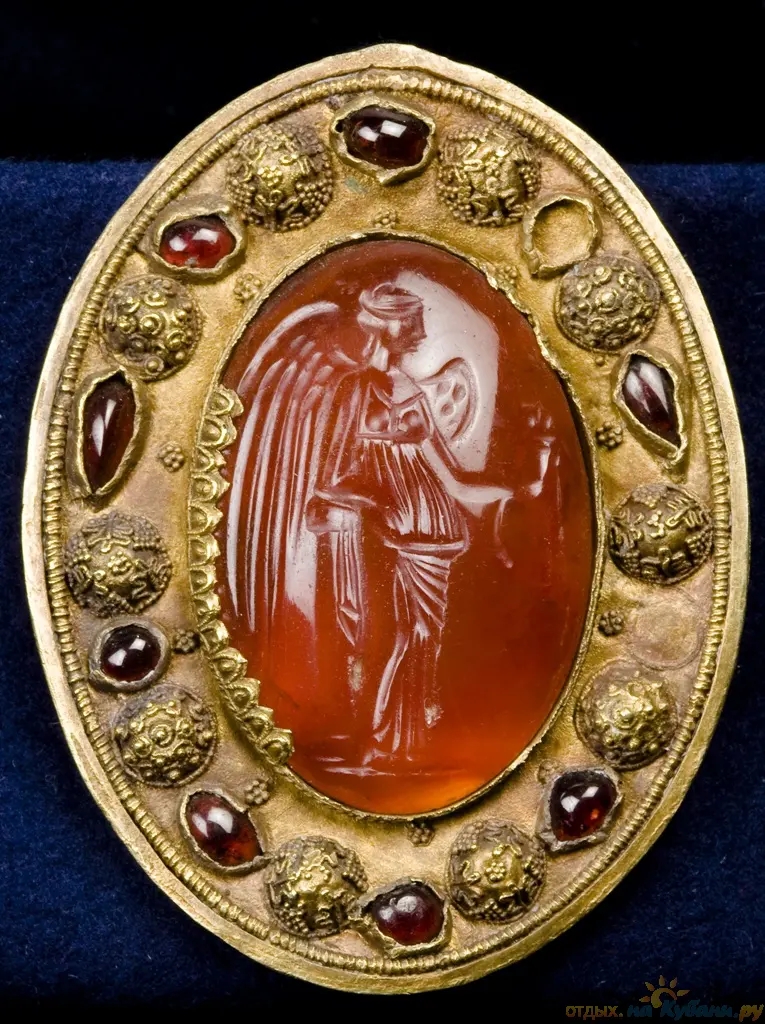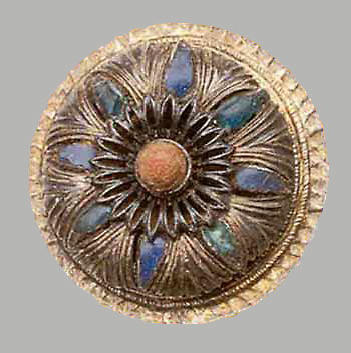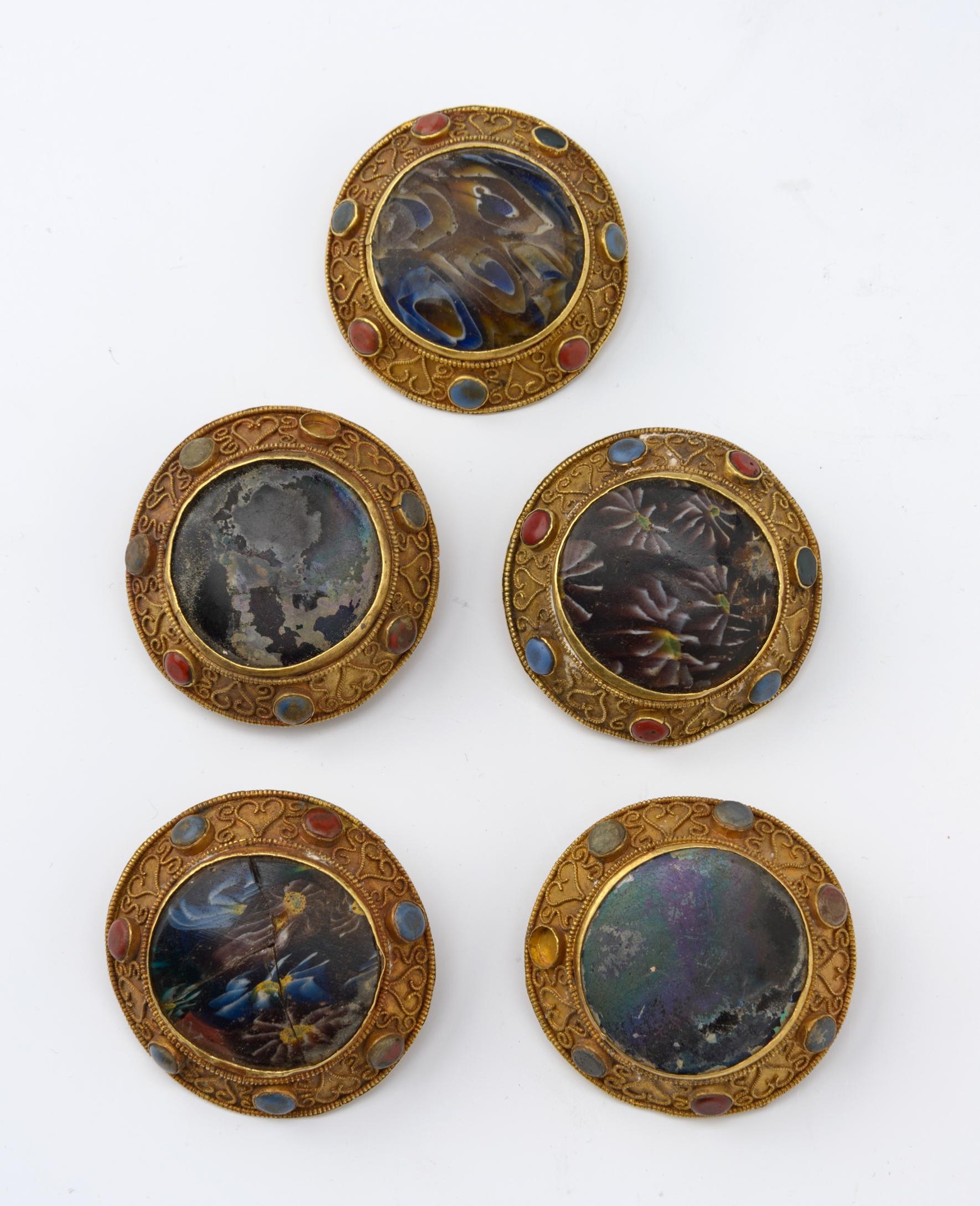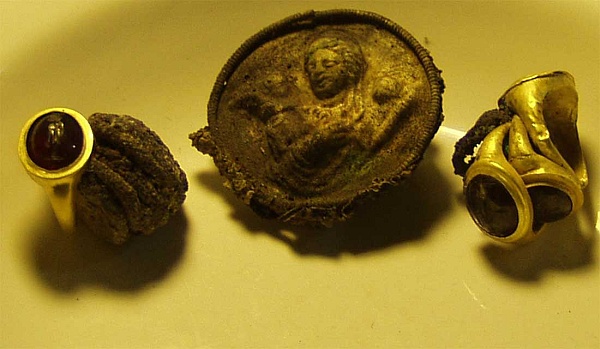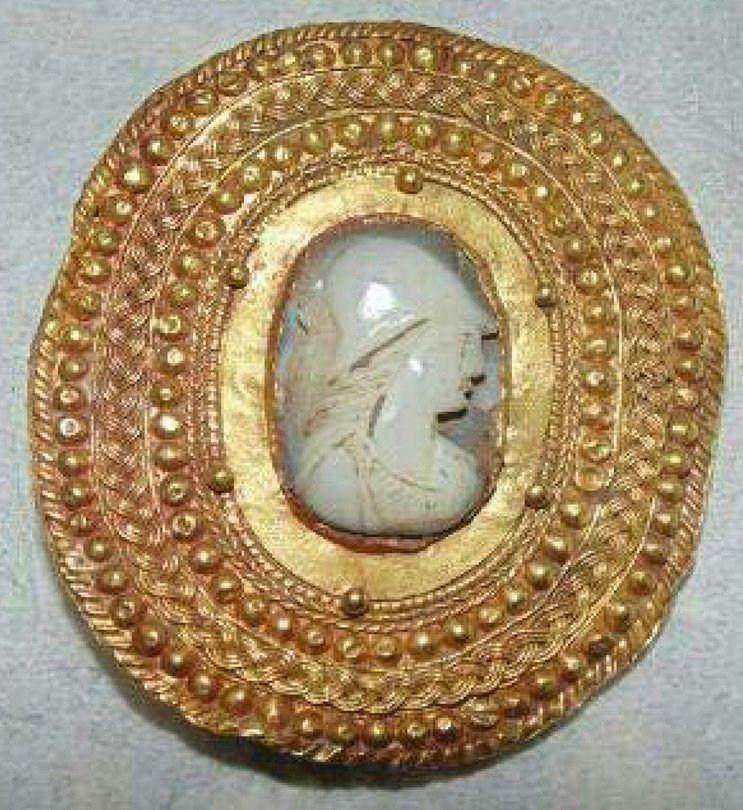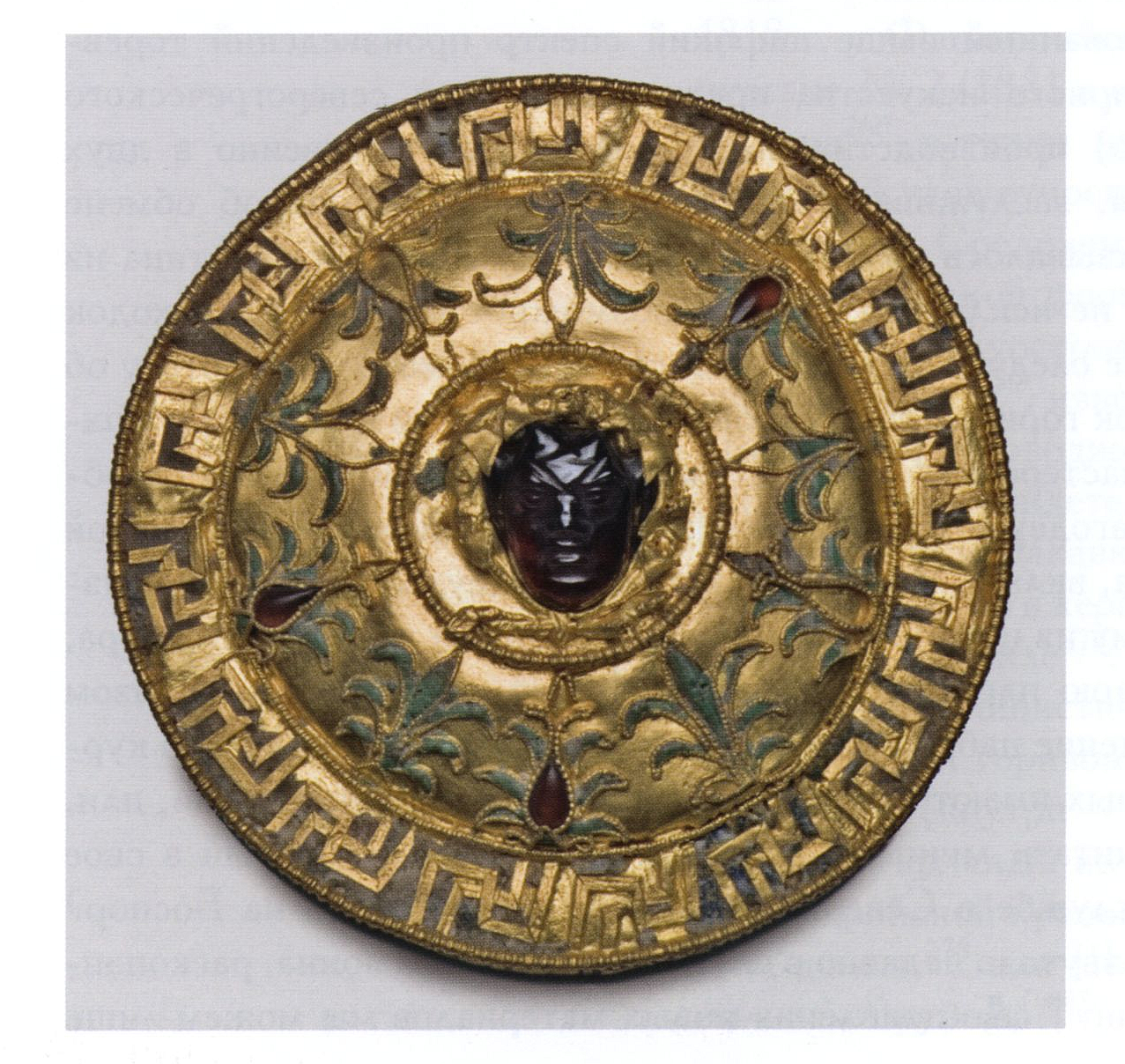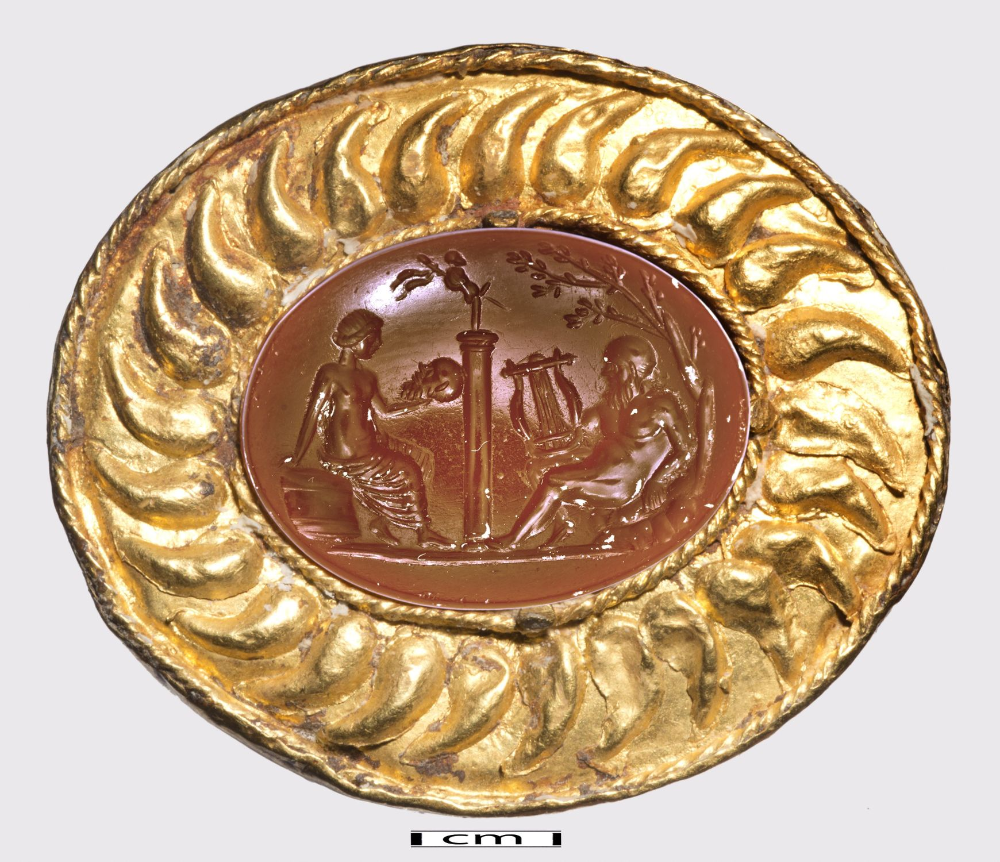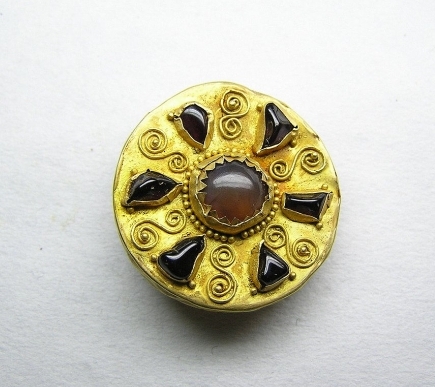“In November 1898, Mihály Kis Németh and his family set up a tent in the border area of Jászberény called Alsómuszáj, preparing for a wedding. During the extraction of the sand used to “decorate” the floor of the tent, a very rich Sarmatian noble woman’s grave was disturbed.
One of the significant pieces is the gold pendant shown in the picture, which Hild defines as the top plate of a carnelian-inlaid gold fibula (fixing clasp), but according to the description in the 1954 inventory book, it could have been more of a hanging ornament.
It is made of pressed gold plate in a shape close to a circle.
On its decorated sheet, notched wire along the edges and a framing made of two wires in ears of corn were soldered.
The surrounding ornament of circular reliefs pressed inside is bordered by a twisted gold wire. Then the frame decoration ends with a twisted wire running around it.
Carnelian in an oval compartment in the center of the inner field.
The partition edges were folded over the stone.
Notched oval wire at the two pointed ends of the compartment.
Two hemisphere with borders are torn off and missing (perhaps the tab was here).
The edge of the plate was bent back to the bottom surface in some places according to the oval shape.
The grain pattern is approx. 1.5 cm long is missing.
The inner twisted wire border is approx. 0.5 cm long is missing.”
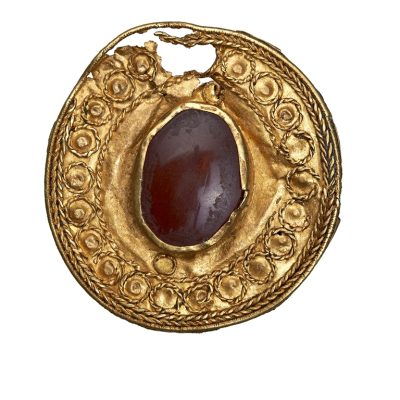
Photo: Ádám Vágó
Source:
An article “Treasures of the dawn of the Middle Ages“
THE BLOG OF THE ARCHAEOLOGICAL DEPARTMENT OF THE JÁNOS DAMJANICH MUSEUM, 2021

